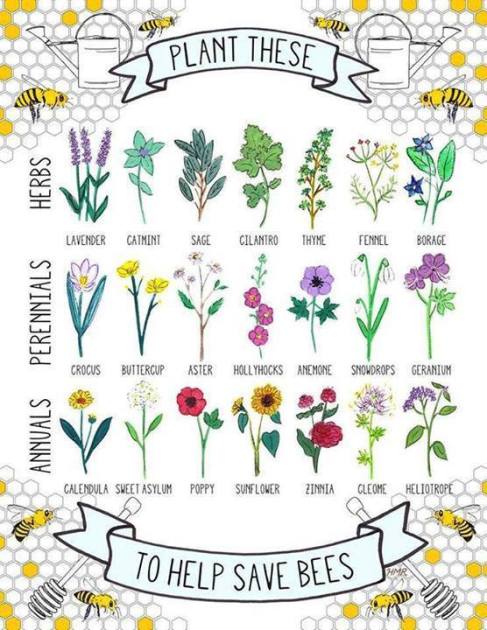It is time to think about spring planting for gardens and landscapes. When thinking about plants, also think about pollinators. That includes bees, butterflies, moths, beetles and hummingbirds.
Pollinators, especially bees, have been in the news. Most people know bee numbers are declining. This is due not only to parasitic mites and disease, but to pesticides and fewer flowers in the overall landscape. For example, there are fewer acres of alfalfa and clover, important pollen and nectar sources, planted today than in years past.
While bees are in the news, pollinators as a whole have declined due to loss of habitat. The importance of pollinators goes without saying, and their decline is a concern. Land owners can help by using pollinator friendly plants and landscape management practices, such as wise pesticide use.
Pollinators need food, shelter and water. Flowers provide nectar and pollen for food. Select a diversity of plants with varying flower colors and plant heights, and try to have something blooming all season. Plant as many plants of one flower type that space allows. This makes foraging easier and increases pollinator efficiency.
Shelter is needed for protection and for nesting and roosting. Use plants of different sizes like trees, shrubs, ornamental grasses and varied size perennials. Avoid the use of weed mats so soil nesting insects can gain access to soil. Use a dead branch or two in the landscape, as well as mulch and some leaf litter.
Don’t forget that butterfly larvae need a food source. Select plants they will feed on and try to enjoy the minor damage to plant leaves. Do not reach for insecticides every time a hole is seen in a leaf. Plants can tolerate many holes in their leaves before they are harmed.
A clean source of water is a must for pollinators. Water made landscape features such as ponds and running water are good water sources. The bowl-like basins of containers kept filled with fresh water will work. Place a rock or two in the water to provide a place for pollinators to land for drinking water.
While garden flowers most often come to mind for attracting pollinators, trees, shrubs, grasses and even herbs provide pollen and nectar as well. Many landscapes already have pollinator-friendly plants. All that may be needed is a water source and wise pesticide use.
The list of pollinator-friendly plants is long. Here are a few to consider for Nebraska landscapes. Some of these are less commonly planted and will add to landscape diversity as well.
Consider flowering ornamentals like serviceberry, hawthorne and northern sources of Eastern redbud. For shade trees, black cherry and oaks are choices as are the commonly planted red maple and linden. For shrubs, Spirea, buttonbush (Cephalanthus), summersweet (Clethra) and Virginia Sweetspire (Itea) are good choices.
Herbs that will attract pollinators include annuals like basil, calendula, dill and fennel. Perennial herbs to use are anise hyssop (Agastache), chives, garlic, oregano, mint and thyme.
The list of flowers is endless. Many gardeners turn to native plants as local pollinators may be best adapted to native flowers. Some good perennials to plant are blue false indigo (Baptisia), swamp milk weed, Liatris, Penstemon, goldenrod, Joe-pye weed, and asters.












